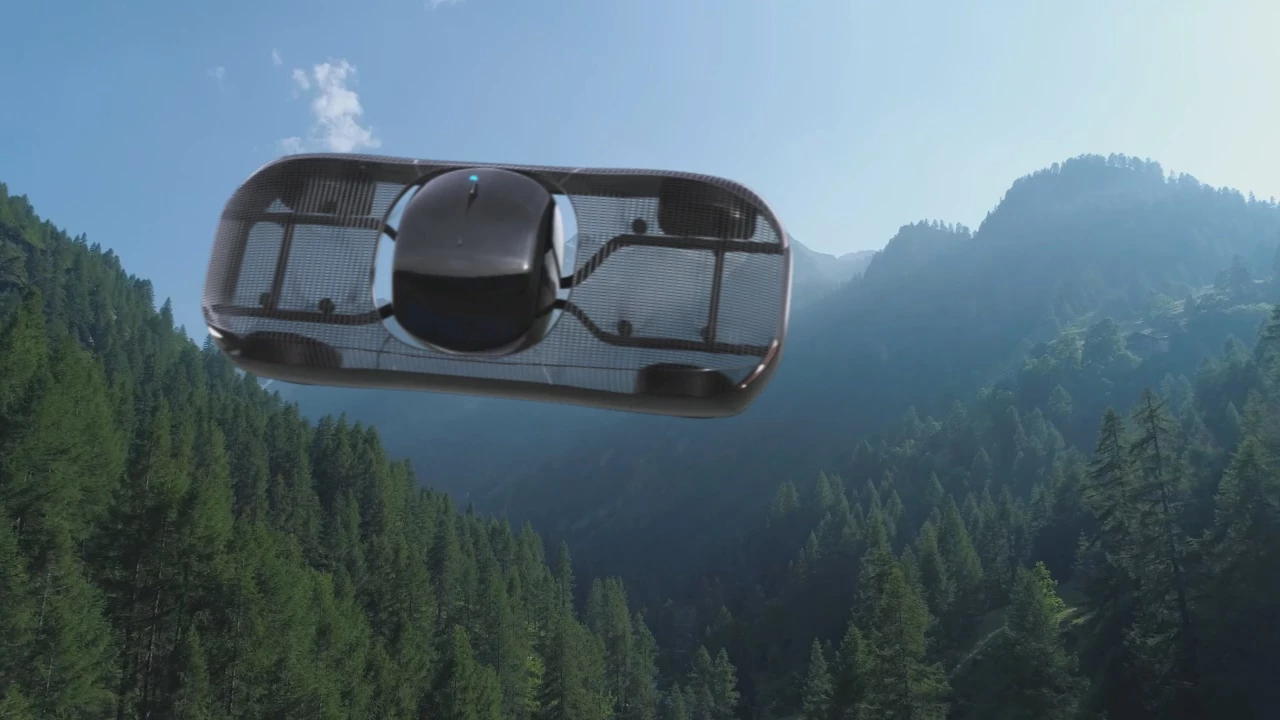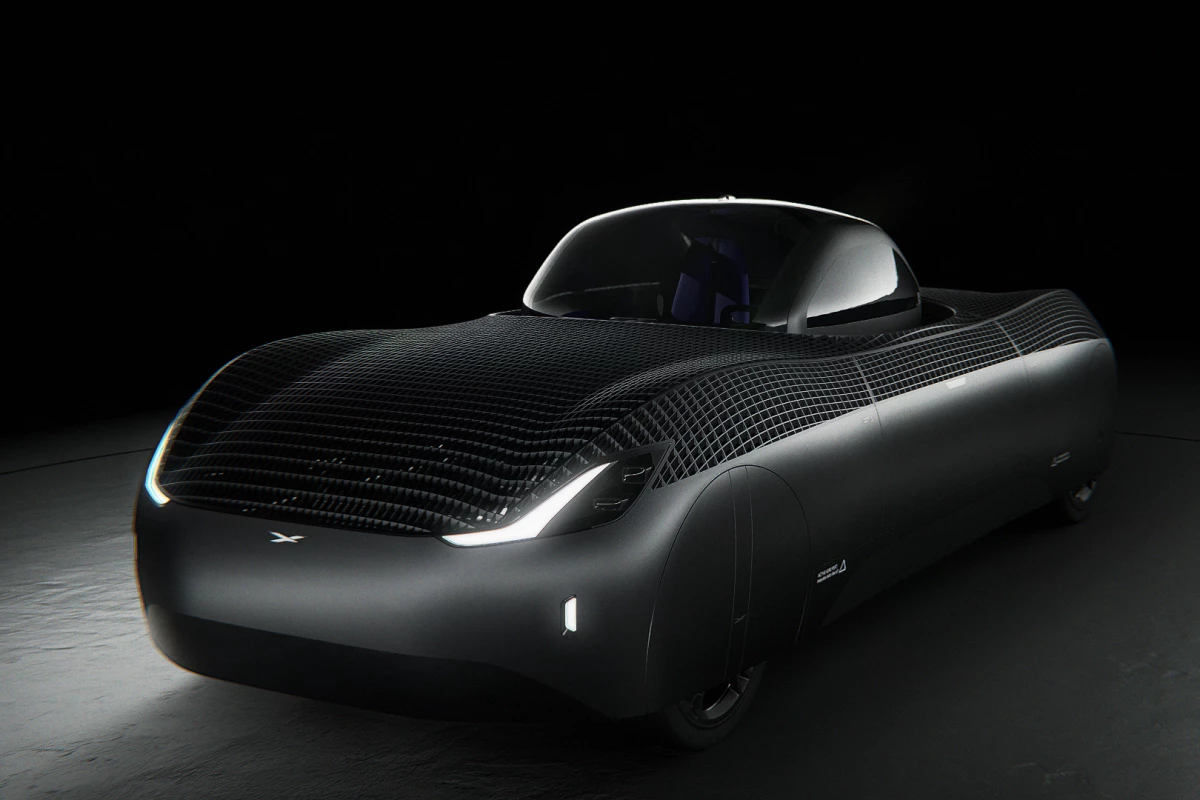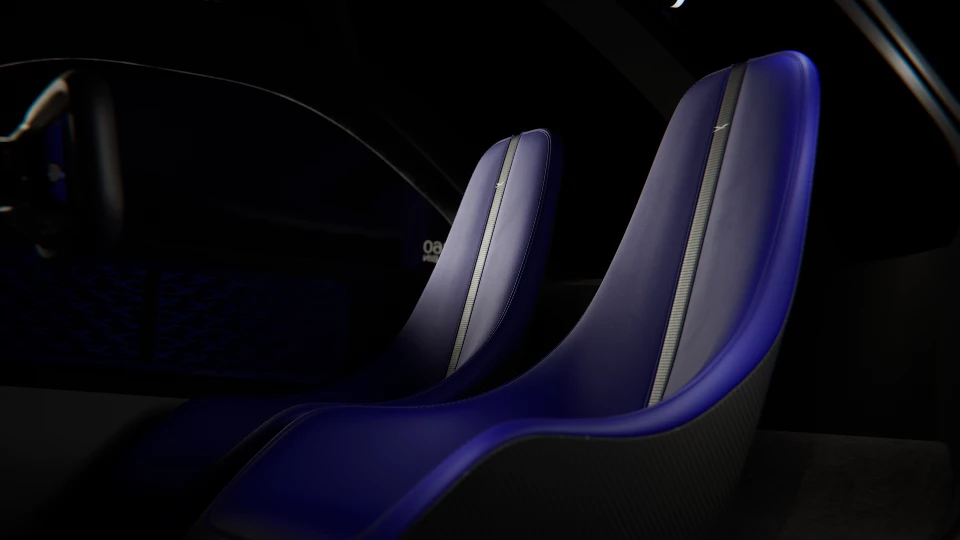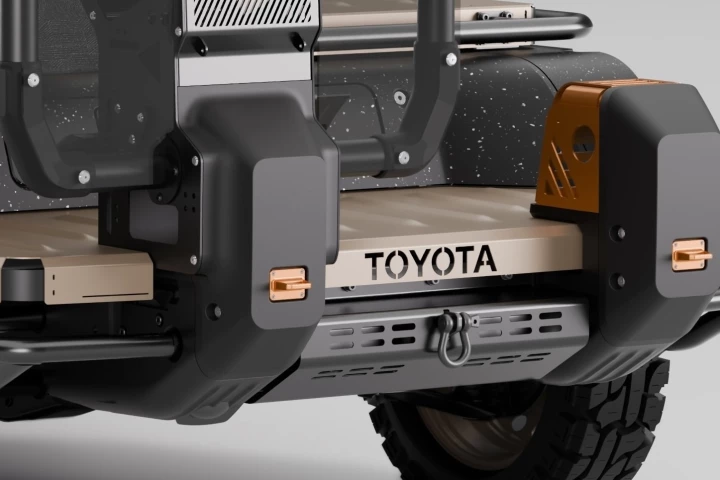California startup Alef Aeronautics has shown off a remarkably fresh take on the street-legal eVTOL flying car in its 2025 Model A. This wild design debuts a 2-axis tilting cabin, and a horizontal cruise flight mode unlike anything we've seen before.
Running entirely on batteries, the Model A uses four hub motors to get around on the street, in a hyper-minimalist frame that looks almost insubstantial from above. In the middle is a round, glassed-over one- or two-seat cabin that's completely isolated from the external bodywork. Indeed, if you want to hop inside, you need to open separate doors in the bodywork and the cabin itself.
The upward-facing parts of the bodywork are made as a lightweight 3D mesh, and if you guessed there are lift rotors beneath for VTOL purposes, you'd be right. As a drone-style airframe, the Model A runs an octacopter setup, with eight propellers, each with maybe a two-foot (61 cm) diameter, and the mesh skin allows air to flow smoothly through the car.

This is about as far as many designers would take the idea, and they'd end up with an acceptable enough multicopter-style flight platform as a result, which would be severely limited in range by its weight and the stiflingly low energy density of today's batteries. But Alef has designed this thing to be much more interesting. Once you're airborne, the cabin rotates 90 degrees to the side, so you're facing sideways. Then, as you go to move forward, the cabin is gimballed to remain level as the airframe tilts around you.
As your airspeed increases, so does the tilt of the airframe, and at a certain point, the side panels of what was once the car become airfoils in their own right. Thus, pilot and passenger find themselves looking at unobstructed panoramic views from a bubble cockpit sandwiched vertically between two wings in a biplane formation. Frankly, it starts looking like something you'd see in Star Wars.
This remarkable repurposing of the bodywork as a set of wings delivers enough lift to make the Model A fly efficiently in cruise mode, and while the design remains limited to how much battery can be carried in that gimballed cabin, Alef says the Model A should be capable of 200 miles (322 km) of driving, or 110 miles (177 km) in the air – a very generous range for a vehicle of this nature.

Alef claims it's been flying full-sized prototypes since 2019 and has demonstrated this machine driving and flying at full scale for its investors – although according to CNET, it's yet to attempt the full transition to horizontal cruise flight with a pilot on board.
One of many difficulties involved in building a flying car is working out how to meet automotive crash safety standards with a chassis that's light enough to lift off. That challenge goes double for eVTOL designs that need to lift their entire weight skyward without the benefit of wing lift. Many folk simply go for a three-wheeler platform, since it can be registered as a motorcycle instead, removing most of the red tape.
Not Alef; this thing has to be a four-wheeler in order to remain symmetrical in cruise flight. But there's not a snowball's chance in hell that this ultra-lightweight chassis will pass street-legal homologation as a car. So Alef has taken the unusual step of designating the Model A a "low speed vehicle," which will be treated more or less the same as a street-legal modified golf cart. It'll need a bare minimum of street gear: headlights, taillights, indicators, mirrors, windshield wipers, a horn, that sort of thing. There'll be a weight limit, which shouldn't be a problem.

It'll also be limited to somewhere between 20 and 25 miles per hour (32-40 km/h) on the street. So despite the rather sporty look that ex-Bugatti/Jaguar designer Hirash Razaghi has created for this machine, it'll be as slow as a wet week. Still, Alef doesn't expect you'll want to drive it much anyway; the road gear is solely for last-mile stuff and the company expects you'll do most of your miles in the air.
Of course, to do this, you'll have to go to designated areas for takeoff and landing, so initially, you'll more or less have to mosey your way over to an airport or a street-accessible helipad. Alef says it believes in the longer term that the laws will change and you'll be able to lift off and touch down pretty much anywhere except restricted zones. In this, and other regards, the company appears extremely optimistic.
Alef is opening up pre-orders on the Model A, at a price of US$300,000, with deliveries slated to begin in Q4 2025. It says you'll probably be able to fly one with a Part 107 drone license, which only requires a written test, but it's not ruling out the possibility that you'll need a pilot's license of some sort.

But the company says it's focused on making this thing much more accessible down the line, with a long-term plan to make a 4-6 person "Model Z" version by 2035, capable of 300 miles (483 km) on the street and 220 miles (354 km) in the air, or more than double that with a hydrogen powertrain.
With a few million dollars behind it, thanks largely to venture capitalist Tim Draper, the company is striking out to realise its vision and get these things into the air. Now look, the harsh reality of the situation is that building cars and planes separately is hard. Building multi-mode vehicles like street-legal flying cars is exceptionally hard, and building electric VTOL flying cars adds another brutal layer of difficulty. Building them to sell makes things even harder, and producing them in mass quantities is probably the hardest of all.
So whatever progress Alef has made in stealth mode, it's got a huge mountain to climb from here, and one littered with the corpses of rivals. But whatever the fate of the Model A, we've got a huge appreciation for a novel idea, and Alef's design is so different and clever (if complex and potentially bulky) that we'd love to see it get a chance to prove its mettle.
Source: Alef Aeronautics








